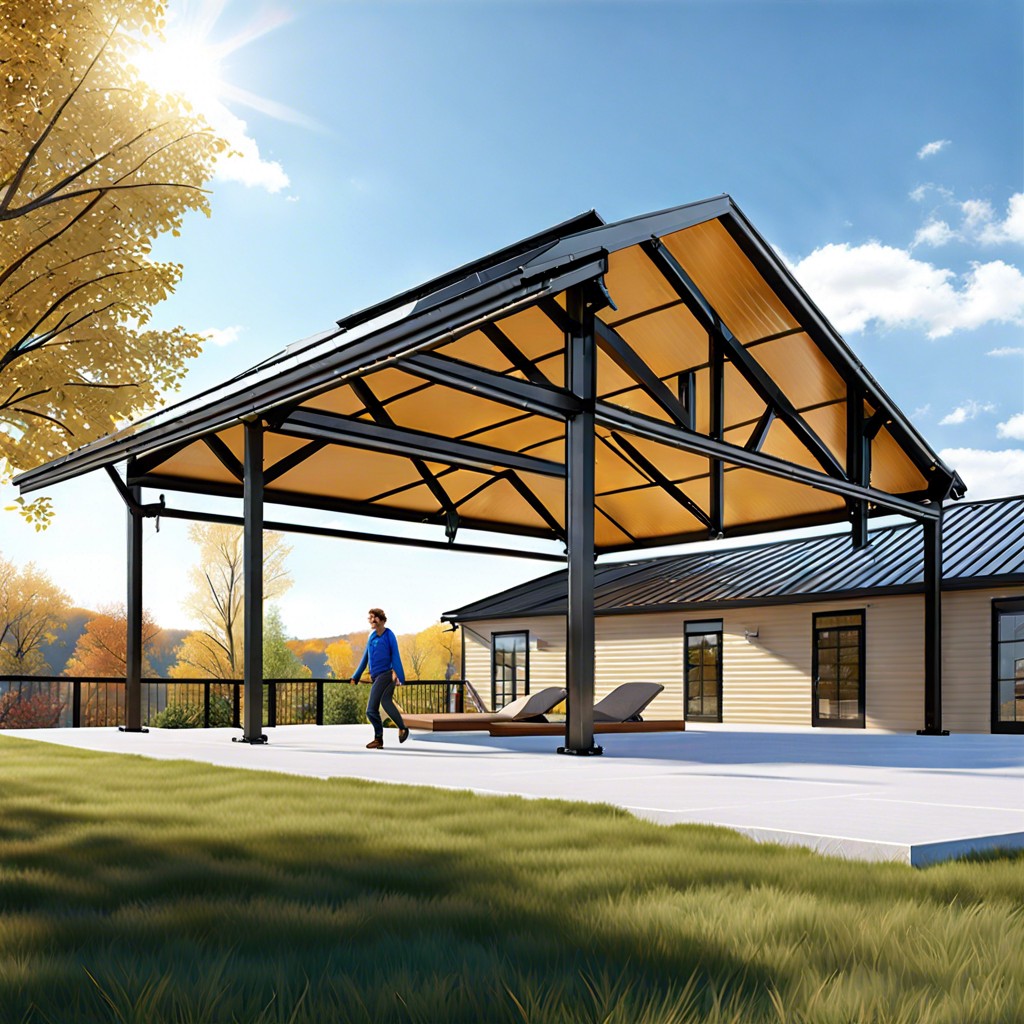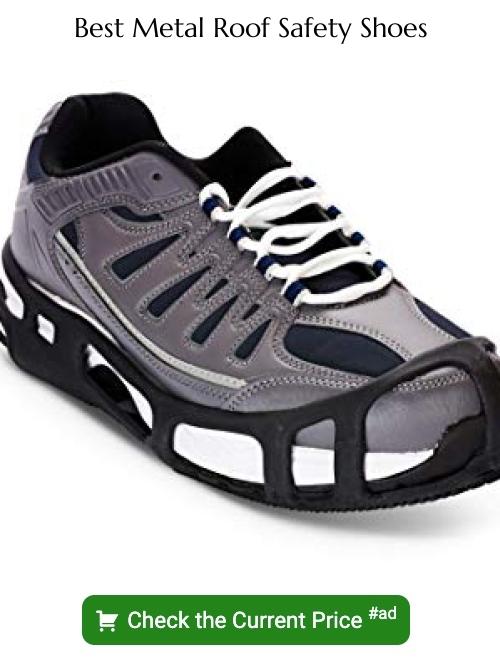Last updated on
Learn the proper techniques and safety measures for walking on a metal roof to perform maintenance or inspections without causing damage.
Key takeaways:
- Assess roof structure and metal type for safe walking.
- Consider weather conditions for optimal safety.
- Use fall protection equipment to prevent accidents.
- Follow manufacturer guidelines for specific metal roofs.
- Seek professional assistance for steep pitches, complex layouts, repairs, installations, inspections, and structural issues.
Assessing Roof Structure and Metal Type

When contemplating walking on a metal roof, first consider the roof’s structural integrity. Roofs designed to support workers or heavy loads are typically safe to walk on, provided safety precautions are followed. Conversely, roofs that were not constructed with foot traffic in mind might be compromised by added weight. Always consult a structural engineer if unsure about your roof’s capacity.
Moreover, the type of metal plays a critical role. Stronger metals like steel can typically withstand walking, while softer materials such as copper or aluminum are more prone to denting and require extra care. The gauge of the metal panel also influences its durability; thicker gauges are generally more walkable than thinner ones. It’s essential to know the specifications of your metal roofing system before proceeding.
Lastly, the roofing profile impacts how safely you can walk on a metal roof. Standing seam roofs are often more walkable than corrugated ones as they have fewer ridges and dips. On the other hand, the height and spacing of the seams or ribs can affect footing, making it crucial to step directly on the seams where support is strongest.
Importance of Weather Conditions for Safety
Weather conditions significantly impact the safety of walking on a metal roof. Wet conditions can make metal surfaces slippery, increasing the risk of falls. Walking on a metal roof during or shortly after rain, frost, snow, or ice is not recommended.
It is also wise to avoid a metal roof during high winds, as gusts can affect balance and stability. Moreover, metal roofs can become extremely hot under direct sunlight, which not only poses a burn risk but can also affect the roof’s integrity temporarily.
Finally, consider the dew that forms in the early mornings or evening; it can be as hazardous as rain. The ideal condition for walking on a metal roof is a dry and calm day. Always prioritize personal safety and postpone roof activities to appropriate weather conditions.
Use of Fall Protection Equipment
When climbing a metal roof, safety is of the utmost importance. Fall protection equipment is not negotiable—it is a necessary safeguard when elevation, sloping surfaces, and potentially slick conditions come into play.
Personal fall arrest systems (PFAS) can be a lifesaver, consisting of a full body harness, a shock-absorbing lanyard, and a sturdy anchor point. It’s crucial to use equipment that complies with OSHA standards to ensure maximum safety.
Roof anchors must be appropriately attached to the structure’s framing, not merely the roofing material itself. These anchors act as secure tie-off points for the harness system.
Always inspect your fall protection gear carefully before use. Look for signs of wear, tear, or damage—these can greatly compromise the equipment’s integrity.
Lastly, training on proper use and deployment of fall protection gear is a must. Without the right knowledge and skills on how to effectively utilize these tools, the risk of injury can be significantly heightened.
Following Manufacturer Guidelines for Specific Metal Roofs
Different metal roofing systems have unique load-bearing capacities, installation methods, and maintenance requirements. To ensure your safety and preserve the integrity of the roof, it is crucial to adhere to the guidelines provided by the manufacturer.
– Check the Roof: Before stepping on the surface, review any documentation that came with your roofing system. This information can usually tell you about the recommended foot traffic paths and any areas that are particularly vulnerable or prone to damage.
– Footwear Recommendations: Manufacturers often suggest specific types of footwear to minimize slipping and reduce potential harm to the roof. Look for these recommendations to ensure the best traction and least impact.
– Point of Contact: The directions might advise on how to distribute your weight on the panels, such as walking over support beams or purlins, to prevent denting or other damage.
– Maintenance and Repair: If the purpose of walking on your roof is for maintenance or repair, follow the manufacturer’s instructions on how to correctly perform these tasks without compromising the integrity of the metal panels.
Following these guidelines is not just a good practice for your safety; it also helps in preserving the roofing system’s warranty, which may be voided by improper foot traffic.
Understanding When Professional Assistance Is Needed
In certain situations, enlisting the help of a professional is crucial for both safety and the integrity of your metal roof. Here’s when to consider calling an expert:
- **Steep Pitch**: If your roof has a steep pitch, the risk of slipping increases. Roofing professionals have specialized equipment and training to safely navigate these angles.
- **Complex Layouts**: Roofs with multiple valleys, dormers, or a complex design can be challenging to walk on without causing damage or risking injury.
- **Repairing Damage**: Attempting DIY repairs can lead to further damage or improper fixes. Professionals can ensure repairs are done correctly, extending the life of your roof.
- **Installing Walkways**: For frequent roof access, professionals can install designated walkways that distribute weight evenly and prevent damage.
- **Inspections**: Regular inspections are best left to professionals with an eye for detail who can spot potential issues before they escalate.
- **Underlying Structural Issues**: If there’s any suspicion of structural damage, a professional can assess the safety of the roof before anyone walks on it.
Seeking professional help is about prioritizing safety and preserving the condition of your roof. When in doubt, it’s always best to consult with a roofing expert.
Related
- How to Walk on Metal Roof: Comprehensive Guide for Safety
- How to Keep from Sliding on a Metal Roof: Comprehensive Guide for Safety Measures
- How to Clean Solar Panels: Step-by-Step Guide for Maximum Efficiency
- How to Work on a Steep Roof: Safety Tips & Techniques
- How to Walk on Clay Tile Roof: Safe and Easy Steps

